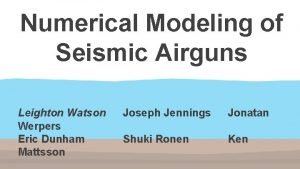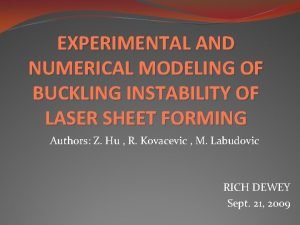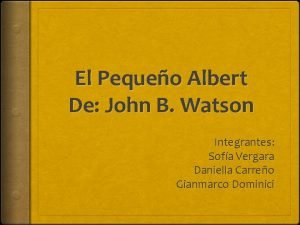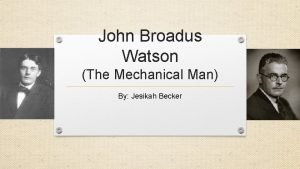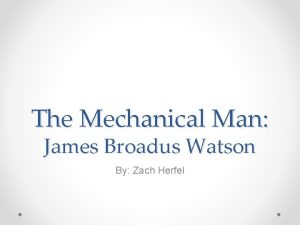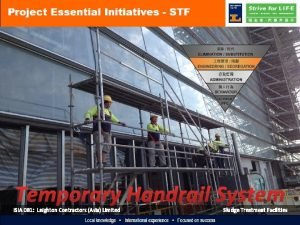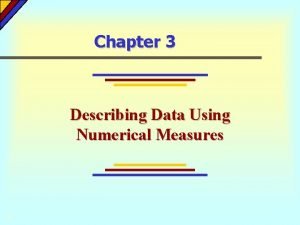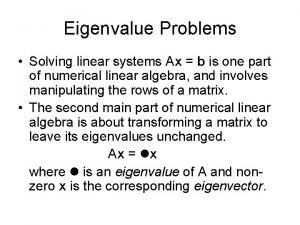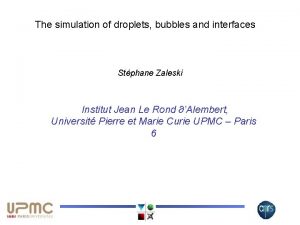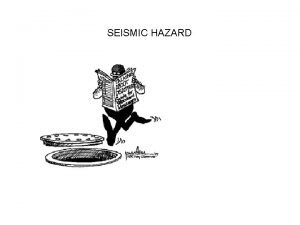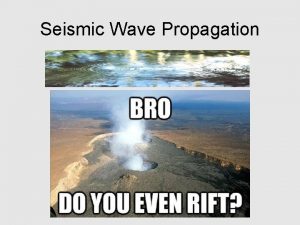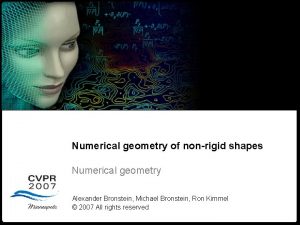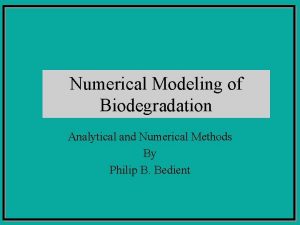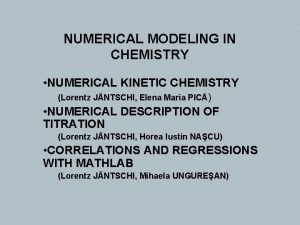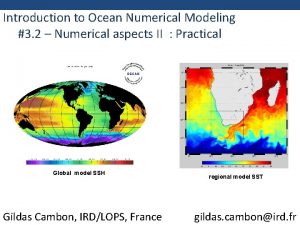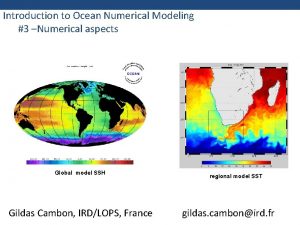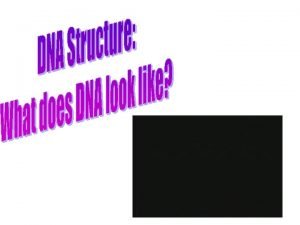Numerical Modeling of Seismic Airguns Leighton Watson Werpers


















- Slides: 18

Numerical Modeling of Seismic Airguns Leighton Watson Werpers Eric Dunham Mattsson Joseph Jennings Jonatan Shuki Ronen Ken

Seismic airguns are not an impulsive source de Graaf et al.

Design a low pressure source • Strengthen low frequency signal • Reduce high frequency noise High frequency noise

Field data from Lake Seneca Near-field pressure signal 1 m 75 m Far-field pressure signal

Field data from Lake Seneca Far-field signal for a 598 in 3 airgun at a measured depth of 7. 5 m for a range of pressures Data

Field data from Lake Seneca Far-field signal for a 598 in 3 airgun at a measured depth of 7. 5 m for a range of pressures Rise time of initial pulse is independent of airgun pressure Ghost Amplitude of bubble peak is independent of airgun pressure Data

The same features are seen in other data sets Laboratory measurements of a scaled down airgun by de Graaf et al. (2014) Rise time of initial pulse is independent of airgun pressure Amplitude of bubble peak is independent of airgun pressure Ghost

Modeling approach • • • Solve the Euler equations governing the motion of the compressible fluid Solution is evaluated on the bubble wall to give a nonlinear ODE for the bubble dynamics Assume a spherical bubble and uniform internal properties of the bubble and airgun

Modeling approach • • • Solve the Euler equations governing the motion of the compressible fluid Solution is evaluated on the bubble wall to give a nonlinear ODE for the bubble dynamics Assume a spherical bubble and uniform internal properties of the bubble and airgun The bubble dynamics are related to the observed pressure signal by

Match data for different firing configurations with no tuning of model parameters 598 in 3 airgun fired with pressure of 1295 psi at measured depth of 5 m Near-field Far-field 50 in 3 airgun fired with pressure of 530 psi at measured depth of 25 m Near-field Far-field

Trends are similar between simulations and data for different firing configurations Data 598 in 3, 25 m measured depth Model 598 in 3, 25 m measured depth

Simulated pressure signal Rise time of the peak is independent of the airgun pressure. This is related to the port rapidly becoming choked Amplitude of bubble peak depends on airgun pressure, unlike in the data Ghost Model 598 in 3, 7. 5 m measured depth

Model results agree with Rayleigh-Willis equation Bubble frequency Depth Airgun pressure Model 598 in 3, 7. 5 m measured depth and volume Dominant frequency predicted by Rayleigh-Willis equation

Euler airgun • • Describe the inside of the airgun using a system of PDE’s rather than ODE’s Account for waves travelling inside the airgun Solve the Euler equations inside the airgun Work done with Jonatan Werpers and Ken Mattsson

Conclusions • Developed a forward model of the airgun/bubble system that is able to match the data with limited tuning • Investigate design ideas for a low pressure source

Conclusions • Developed a forward model of the airgun/bubble system that is able to match the data with limited tuning • Investigate design ideas for a low pressure source Increasing the quantity PV results in: Shift to lower dominant frequency Reduction of high frequency noise

Conclusions • Developed a forward model of the airgun/bubble system that is able to match the data with limited tuning • Investigate design ideas for a low pressure source Increasing the quantity PV results in: Shift to lower dominant frequency Reduction of high frequency noise

Conclusions • Developed a forward model of the airgun/bubble system that is able to match the data with limited tuning • Investigate design ideas for a low pressure source Increasing the quantity PV results in: Shift to lower dominant frequency Reduction of high frequency noise
 Werpers
Werpers Numerical modeling
Numerical modeling John b. watson emma watson
John b. watson emma watson John b. watson emma watson
John b. watson emma watson John watson james broadus watson
John watson james broadus watson John broadus watson emma watson
John broadus watson emma watson Leighton broadcasting grand forks
Leighton broadcasting grand forks Leighton contractors (asia) limited
Leighton contractors (asia) limited Water polo positions
Water polo positions Sonja leighton-kone
Sonja leighton-kone Relational modeling vs dimensional modeling
Relational modeling vs dimensional modeling Helen erickson nursing theory
Helen erickson nursing theory Numerical datum crossword puzzle clue
Numerical datum crossword puzzle clue A parameter is a numerical description of a
A parameter is a numerical description of a Solving numerical problems
Solving numerical problems Numerical coefficient
Numerical coefficient Numerical methods for partial differential equations eth
Numerical methods for partial differential equations eth Sketching as a tool for numerical linear algebra
Sketching as a tool for numerical linear algebra Numerical programming
Numerical programming
